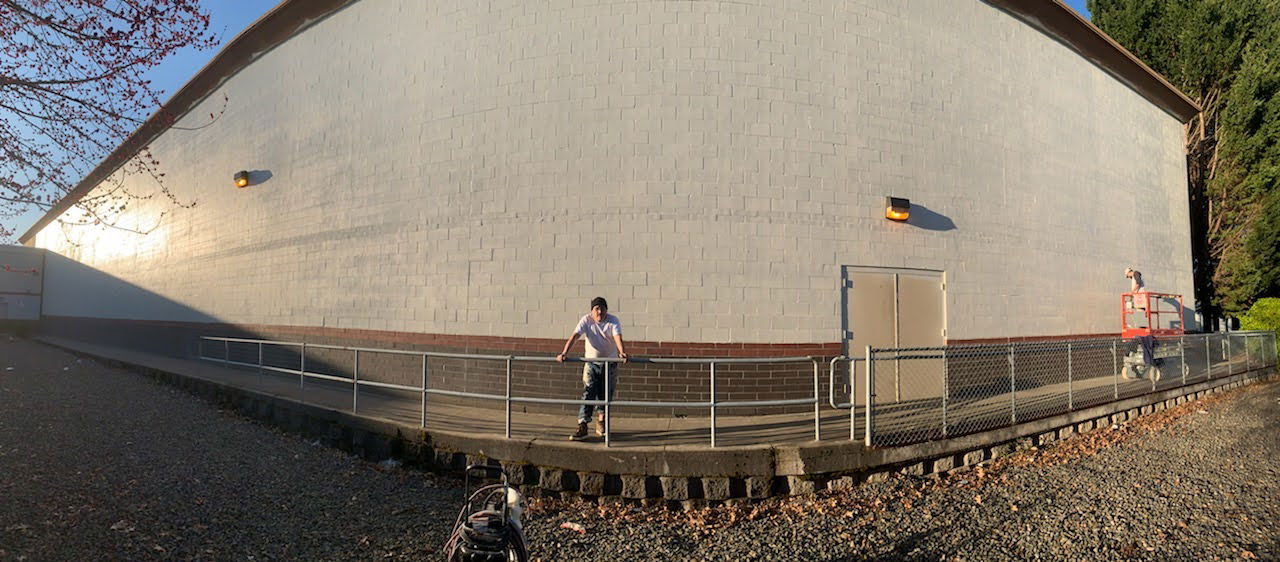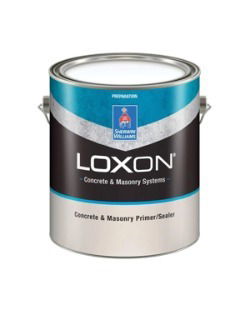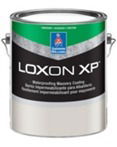Painting Exterior Brick - A Complete Guide

Key Features:
- Assessment: Before painting, inspect the brick for any damage or moisture issues. Older, more porous bricks may require special treatments or might not be suitable for painting if they are significantly deteriorated.
- Preparation: Clean the brick thoroughly, possibly with power washing, and make necessary repairs to cracks or damaged bricks. Apply a quality primer designed for exterior brick to ensure the best paint adhesion and durability.
- Choosing Paint:
- Type of Paint: Elastomeric and acrylic latex are excellent choices for exterior brick due to their durability and breathability.
- Color Selection: Opt for colors that complement your home’s style and surroundings. Lighter colors are beneficial for reflecting sunlight and can help prevent rapid fading.
Introduction to Exterior Brick Painting
Painting exterior brick can dramatically enhance the curb appeal of a home and potentially increase its market value. However, it's essential to consider several factors before embarking on this transformative project, particularly the age and condition of the brickwork, as these will influence the final outcome and durability of the paint job.
Assessing Your Brick for Painting
Before you decide to paint your exterior brick, a thorough assessment is crucial to ensure that the brick is in a suitable condition for painting.
Check for Damage:
- Visual Inspection: Examine the brickwork closely for any signs of damage, such as cracks or crumbling, which could indicate underlying issues.
- Moisture Check: Look for signs of moisture penetration, as trapped moisture can lead to paint failure. Addressing these issues before painting is vital.
Age of Brick:
- Porosity: Older bricks tend to be more porous and may absorb more paint, requiring a specific approach to ensure even coverage and long-lasting protection.
- Condition: Consider the historical value of the brickwork. Painting historic brick can sometimes reduce its value if not done correctly.
Preparing the Surface
Proper preparation of the brick surface is key to a successful painting project.
Cleaning:
- Method: Use power washing or hand scrubbing to thoroughly clean the brick of any dirt, algae, mold, or efflorescence. Ensure the brick is completely dry before proceeding.
- Safety: When power washing, be careful not to erode the mortar or the brick's surface.
Repairs:
- Crack Filling: Use a suitable filler to repair any cracks or gaps in the brickwork to prevent future moisture ingress and ensure a smooth painting surface.
- Brick Replacement: Severely damaged bricks should be replaced rather than painted over to maintain the structural integrity of the wall.
Priming:
- Primer Selection: Choose a high-quality primer designed for exterior brick. This will help seal the porous brick and provide a good base for the topcoat.
- Application: Apply the primer evenly, paying extra attention to filling the pores of the brick to create a stable surface for the paint.
Choosing the Right Paint and Tools
Selecting the appropriate paint and tools is essential for painting exterior brick effectively, ensuring that the finish will withstand the elements and maintain its aesthetic appeal over time.
Type of Paint:
- Elastomeric Paint: This type of paint is ideal for brick as it is extremely durable and can bridge small cracks, providing a waterproof coating that also allows the brick to breathe.
- Acrylic Latex Paint: Another excellent option, acrylic latex paint offers good breathability and flexibility, which is crucial for adapting to temperature changes without cracking.
Color Choices:
- Harmonizing with the Home's Style: Choose colors that complement the architectural style and existing colors of your home's trim and roofing.
- Considering the Surroundings: Take into account the landscape and other exterior elements. Natural, earthy tones often blend well with outdoor environments, while bold colors might be used to make a statement or highlight architectural features.
In Our Experience:
"Make sure if the block is coarse or has a lot of holes on the surface, use a block filler primer. ask to tent the primer 50% tot he color your going to paint so there is no bleed through."
Application Techniques
Applying paint to brick requires specific techniques to ensure thorough coverage and a long-lasting finish.
Tools Needed:
- Brushes: Use high-quality brushes for precision work around edges and to cover mortar lines thoroughly.
- Rollers: A roller can cover large areas more quickly. Opt for rollers with a thicker nap to manage the texture of the brick.
- Sprayers: For the most efficient application on very uneven surfaces, a sprayer can provide even coverage and penetrate the nooks and crannies of the brick.
Technique Tips:
- Painting Mortar and Brick Faces: Ensure that every part of the brick's surface, including the mortar joints, is covered completely. This may require multiple tools or methods to achieve.
- Even Application: Apply paint in consistent, even strokes. When using a roller or brush, work in small sections to maintain a wet edge, reducing the visibility of lines.
- Multiple Coats: Depending on the color and type of paint, apply multiple coats to achieve the desired opacity and protection.
The Pros and Cons of Painting Brick
Painting exterior brick can significantly alter the appearance of your home, providing both aesthetic and functional benefits. However, this decision comes with important considerations:
Pros:
- Aesthetic Transformation: Painting brick can modernize older homes or refresh the exterior if the original brick has become discolored or outdated.
- Maintenance: Once painted, brick generally requires less maintenance than unpainted brick since it is sealed by the paint, which can protect against weathering and erosion.
Cons:
- Moisture Concerns: Paint can trap moisture inside the brick, potentially leading to damage or deterioration over time if not properly maintained.
- Permanence: Once you paint brick, it is difficult and often impractical to return it to its original state. This is a significant commitment that should be considered carefully.
- Ongoing Maintenance: Painted surfaces may require more frequent repainting and touch-ups compared to natural brick, especially in harsh climates.
Maintenance and Care
Maintaining painted brick is essential to preserving its appearance and prolonging its lifespan. Proper care involves routine maintenance and gentle cleaning methods.
Routine Checks:
- Regular Inspections: Schedule bi-annual or annual inspections to check for any signs of peeling, chipping, or cracking in the paint. Early detection of these issues can prevent more extensive damage.
- Monitoring for Moisture: Keep an eye out for signs of moisture retention or mold growth, particularly after heavy rains or in shaded areas that don’t dry well.
Cleaning:
- Gentle Cleaning Techniques: Use a soft brush or a low-pressure hose to clean the brick surface. Avoid high-pressure washing, which can strip the paint and damage the underlying brick.
- Appropriate Cleaners: Use soaps that are safe for painted surfaces, ensuring they do not contain harsh chemicals that could strip or fade the paint.
- Touch-Up Advice: Keep some of the original paint used on your brick to perform touch-ups as needed. Small repairs made promptly can prevent the need for larger, more extensive repainting jobs.
Conclusion
Throughout this discussion, we've explored the significant benefits and considerations of painting exterior brick. This transformation can refresh your home’s exterior, enhance its curb appeal, and potentially increase property value. However, it's crucial to understand the commitment involved:
- Maintenance Needs: Painted brick requires ongoing care and occasional repainting.
- Irreversibility: Once painted, it is difficult to revert to original brick.
Weighing these factors will help ensure that your decision to paint brick is well-informed and suitable for your long-term satisfaction and property goals.
Action
Ready to transform your home with a new exterior look? We recommend consulting with professional painting services to discuss your project. Visit your local paint store to explore color options and get advice on the best products for your exterior brick painting project. Professionals can provide valuable insights and help you achieve the best results with confidence.
-
People Also Ask:
What are the recommended types of paint for exterior brick, and why?
For exterior brick, elastomeric and acrylic latex paints are recommended due to their durability and breathability. Elastomeric paint is ideal because it is extremely durable, can bridge small cracks, and provides a waterproof coating while allowing the brick to breathe. Acrylic latex paint is also suitable as it offers good breathability and flexibility, crucial for adapting to temperature changes without cracking.
How should you prepare brick surfaces before applying paint?
Preparing brick surfaces for painting involves several key steps:
- Cleaning: The brick should be thoroughly cleaned to remove any dirt, algae, mold, or efflorescence. This can be done through power washing or hand scrubbing, ensuring the brick is completely dry before proceeding.
- Repairs: Any cracks or gaps in the brickwork should be filled with a suitable filler to prevent future moisture ingress and ensure a smooth painting surface. Severely damaged bricks should be replaced to maintain structural integrity.
- Priming: Applying a high-quality primer designed for exterior brick is crucial. This helps seal the porous brick and provides a good base for the topcoat, enhancing paint adhesion and durability.
What are the advantages and disadvantages of painting exterior brick?
Advantages:
- Aesthetic Transformation: Painting can modernize older homes or refresh the exterior if the original brick has become discolored or outdated.
- Maintenance: Painted brick generally requires less maintenance than unpainted brick since it is sealed by the paint, which can protect against weathering and erosion.
- Disadvantages:
- Moisture Concerns: Paint can trap moisture inside the brick, potentially leading to damage or deterioration over time if not properly maintained.
- Permanence: Once brick is painted, it is difficult and often impractical to return it to its original state, requiring a significant commitment.
- Ongoing Maintenance: Painted surfaces may require more frequent repainting and touch-ups compared to natural brick, especially in harsh climates.
-
SUBSCRIBE TO OUR BLOG: Stay informed with the latest in Painting and DIY projects by subscribing to Lightmen Painting. Get insights, tips, and more delivered straight to your inbox. We would also love to know what you would like to read about, leave thoughts on where we should go next. Interests, Topics, Ideas, all are welcome.
If your in the Portland, Or. area and need advice or a free no obligation estimate call us at 503-389-5758 or email scheduling@lightmenpainting.com
Local Shout Out:
Celebrating Milwaukie Riverfront Park: A Riverside Retreat for Recreation and Relaxation
From the dedicated team at Lightmen Painting, we extend our warmest regards to Milwaukie Riverfront Park, a beautiful green space along the banks of the Willamette River. Just as we strive for excellence in our painting services, this park offers residents and visitors a tranquil setting for relaxation and an array of activities, from picnicking to kayaking. It enhances the community by providing a scenic venue for outdoor enjoyment and events, reflecting our commitment to improving spaces that enrich the community experience.
Thanks for stopping by Lightmen Daily! Stay tuned for more practical tips and expert advice on making your painting projects flawless, from wall to floor!
Definitions
- Assessment: Before painting, inspect the brick for damage or moisture issues. Older, porous bricks may need special treatment or might not be suitable for painting if significantly deteriorated.
- Preparation: Clean the brick thoroughly, possibly with power washing, and make necessary repairs. Apply a quality primer designed for exterior brick to ensure paint adhesion and durability.
- Choosing Paint: Elastomeric and acrylic latex paints are recommended for exterior brick due to their durability and breathability. Opt for colors that complement your home’s style and surroundings.
- Preparing the Surface: Clean brick with power washing or hand scrubbing, repair cracks, and fill gaps. Apply primer evenly to seal pores and create a stable surface.
- Choosing the Right Paint and Tools: Elastomeric and acrylic latex paints are ideal, while brushes, rollers, and sprayers are necessary tools for application.
- Application Techniques: Ensure thorough coverage by using high-quality tools and applying paint evenly. Multiple coats may be needed for desired opacity and protection.
- The Pros and Cons of Painting Brick: Painting brick can modernize a home's appearance and reduce maintenance but requires careful consideration of moisture concerns and ongoing maintenance.
- Maintenance and Care: Regular inspections, gentle cleaning, and prompt touch-ups are essential for maintaining painted brick.
- Conclusion: Painting brick can enhance curb appeal and property value but requires careful consideration of maintenance needs and irreversibility. Consulting with professionals and exploring color options is recommended.
- Action: Readers are encouraged to consult with professional painting services, explore color options at local paint stores, and subscribe to Lightmen Painting's blog for more insights and tips.
Lightmen Painting Serving: Portland, Tigard, Lake Oswego, Tualatin, West Linn, Milwaukie, Sherwood, Happy Valley, Oregon City, Beaverton, Hillsboro, Gresham





